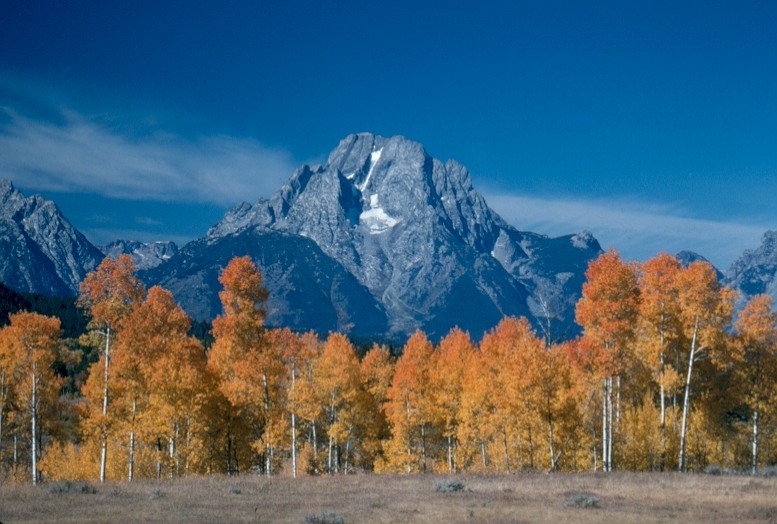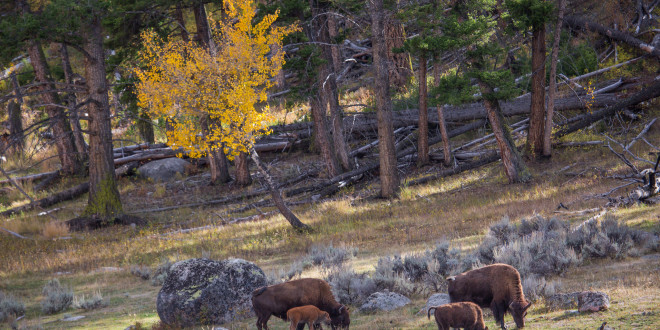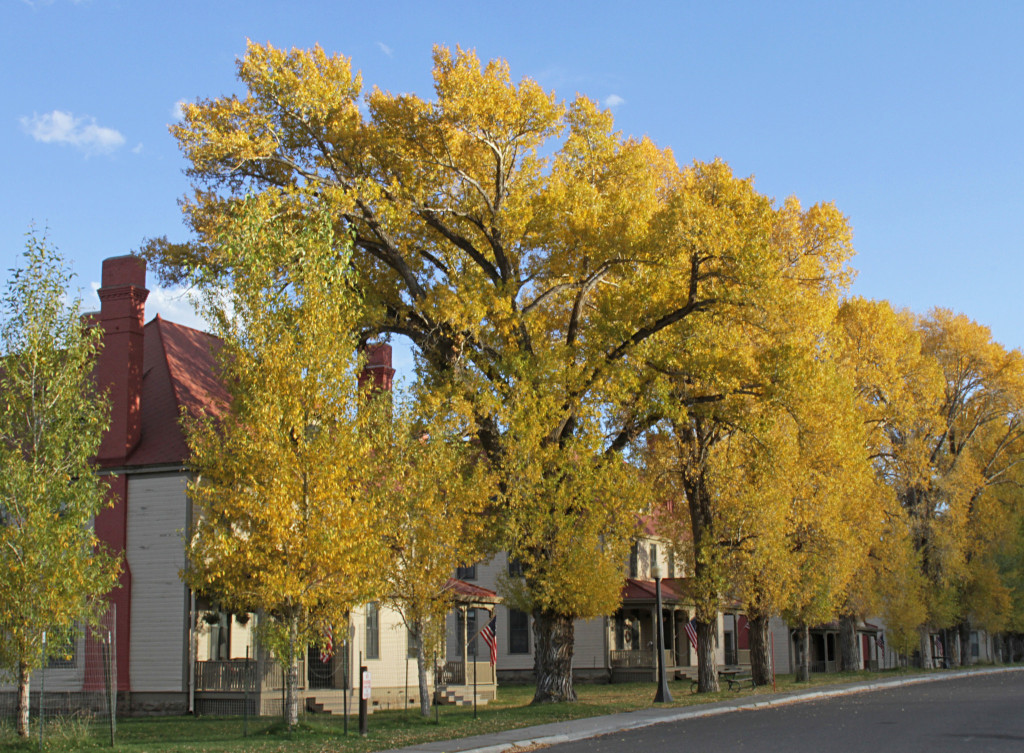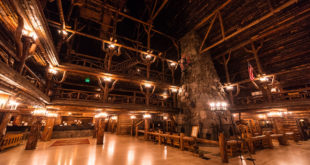Summertime tends to be the most popular time of year for Yellowstone visitation, but what about Yellowstone in autumn?
September generally marks the beginning of autumn for Yellowstone; it’s when places begin closing, either until next summer rolls around or in the interim between autumn and winter. Interestingly, it’s also one of the most popular months for Yellowstone visitation. July may reign as Yellowstone’s most popular month, but after August and June, September shines, outpacing even May, which has the de facto opening day for Yellowstone’s summer season, Memorial Day.
Indeed, September (and to a lesser extent, October) alone handily exceeds the winter season in terms of people visiting. But why? After all, by the end of September, nearly every restaurant and lodging facility is closed. Both the Beartooth Pass and Dunraven Pass close by mid-October. And by November, every facility is closed, and nearly every road save the North and Northeast Entrance roads.
It could be September visitation is just coming off the highs of July and August, but perhaps there is something special about Yellowstone in autumn? In fact there almost certainly is something special.
Many changes are apparent in Yellowstone in autumn. As the long days begin to wane and the temperature drops, Yellowstone National Park edges into fall colors and wildlife such as bighorn sheep and mountain goats start their move to different elevations around the Park or outside, in the Greater Yellowstone Area. Hibernating animals, such as bears, start preparing for winter. Other animals, like elk, go into rut, so give them extra space if you’re out in the backcountry.
In fall, the whole Park seems to be in flux, changing state like Yellowstone’s myriad geysers and hot springs.
A Quick Guide To Yellowstone in Autumn
When visiting the Park in September or October, it’s important to pack smartly. Although it can get rather chilly in the evening, it’s also likely (especially in early September) for temperatures to still hit the 60s and even lower 70s, especially when you factor in heat from the sun. So while you don’t need to pack a Winter Warrior getup, you should consider layering for optimal adaptability. Pack a cozy sweater or sweatshirt, as well as a sunhat or baseball cap and rain gear—just in case!
You should also pay close attention to Yellowstone’s opening and closing dates. Certain areas of the park close sooner than others, either in part or as a whole. Tower-Roosevelt, for instance, is completely closed by September 17, while most of Mammoth persists into October. Even into autumn, most campgrounds remain open, some (like Slough Creek) persisting into October and one (Lewis Lake) persisting to November 1!
As always, when driving in Yellowstone, it’s important to keep an eye out for wildlife, both for your pleasure and your safety. Bison trotting on or near the road, for instance, should be given wide berth.
Seven Things To Do On An Autumn Yellowstone Visit
Relax on the Old Faithful Inn balcony
Nothing says “relaxing” like an evening spent on the Old Faithful Inn balcony—with a cup of coffee, a bottle of beer, a glass of wine, or a pour of whiskey—waiting for Old Faithful to erupt or enjoying the open air of Yellowstone National Park. Obviously, you wouldn’t want to stay out here long when the temperature start approaching freezing, but especially in early autumn, the balcony is a refreshing place to be.
Stroll around the West Thumb Geyser Basin
West Thumb Geyser Basin is a perfectly autumnal basin. It’s placid, with many quietly bubbling hot springs and picturesque features like Fishing Cone and the appropriately named Abyss Pool.

Drive around Grand Teton National Park
Yellowstone’s gorgeous cousin to the south, Grand Teton is a heartily recommended destination for visitors coming to Yellowstone in autumn, especially for fans of fall colors. Grand Teton’s numerous stands of quaking aspen (pictured above with Mount Moran) take on the color of fire and resemble groves of perennially burning candles.
In addition, you can still stay and dine in Grand Teton in autumn, as their autumn schedule, for the most part, persists into late September and October. The Jackson Lake Lodge restaurants, for instance, don’t close until October 8 at 11 a.m.
Drive through the Hayden/Lamar Valleys
The Hayden/Lamar Valleys are a hub for Yellowstone wildlife and show some of the most dramatic autumnal changes in the Park.
Sip coffee or cocoa in the Mammoth Hot Springs Map Room
The Map Room is one of the best spaces in Yellowstone National Park’s lodging facilities. The woodwork is fascinating and the room itself is spacious, with windows looking out onto the Mammoth Hot Springs complex. It’s also a prime place to watch elk graze on the lawn.
See Yellowstone Lake
You can do this several ways. You can enjoy a view of the Lake and shoreline from the Lake Lodge porch. Or you can make a trek out to the Lake General Store; be careful though as there’s a steep slope just outside the Store. Otherwise, consider taking a drive along the shoreline up to Steamboat Point or down toward West Thumb and Grant Village.
See the Mammoth Terraces
As recently as this summer, the Mammoth Terraces have been undergoing dramatic changes. The Terraces are still a delight for visitors and should take top priority on a Yellowstone in autumn itinerary, especially toward October as the rest of the Park starts to shut down until next summer.
 Yellowstone Insider Your Complete Guide to America's First National Park
Yellowstone Insider Your Complete Guide to America's First National Park







You must be logged in to post a comment.